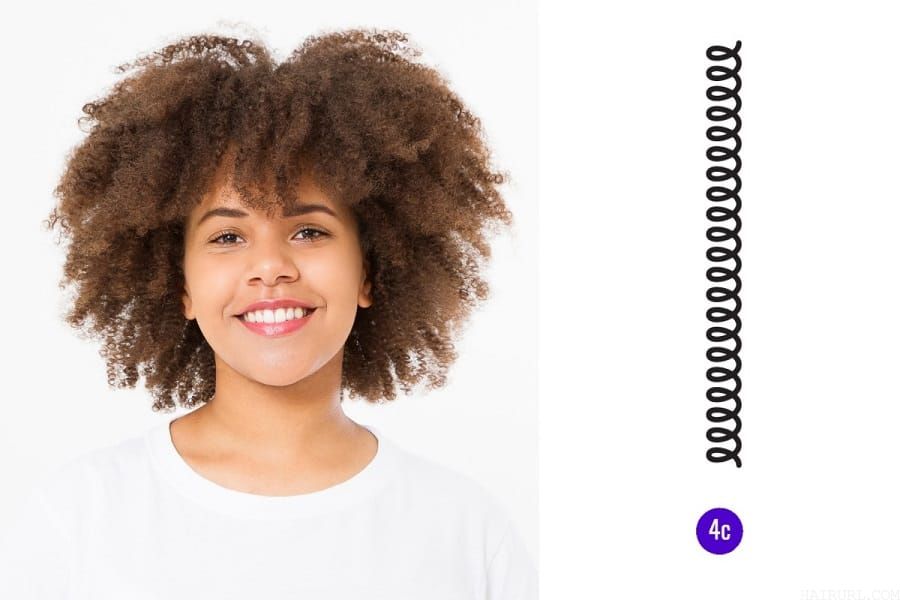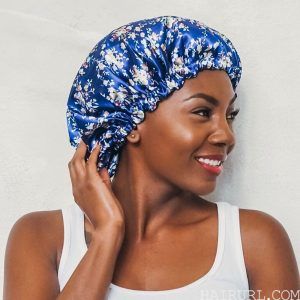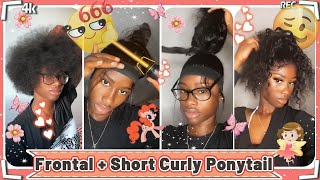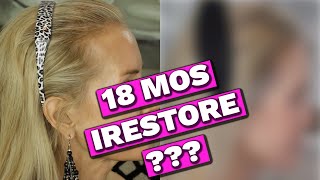4C Hair Guide: How To Style and Care for 4C Hair
Curly hair that is densely packed, tightly coiled, and prone to breakage and extensive shrinkage has a technical term used to identify it: ‘4C Hair‘. If you have this type of hair, you are likely facing a unique set of challenges when caring for it. Fear not; our 4C style and care guide will provide you with all the information you need to know about how to manage your locks, so they look fantastic.
Our salon experts will teach you how to care for your natural 4C hair, what products to use (and what products to avoid!), and how to bring out the best of your kinky curls, so they look healthy, well-cared-for, and correctly styled for your facial features.
Understanding the Characteristics of 4C Hair Type

4C hair is the4c densest of all curly hair. It has hundreds of thousands of curls in a zigzag pattern so subtle that they’re hard to discern at first glance, but when you look closely, you can see the individual coils. If your hair has a coarse dry texture that looks like a big ball of cotton, it’s probably 4C hair.
4C hair is also prone to extreme shrinkage; up to 75% is considered normal. This extra shrinkage leads to more tangles and knots, and more tangles and knots lead to more broken strands. You know the rest of the story!
It’s also quite normal to have different hair growth in various sections of your scalp. You may have 4B in the back area and 4C on the top and front. Don’t worry about that.
All the pointers we’ll be giving you in this 4C hair care guide will also work great on 4B hair. The key to success is following through with our tips and not getting lazy when you’re short on time.
How to Take Care of Natural 4C Hair
4C hair is often wiry and stiff to the touch. Unless you decide to use chemical relaxers, there’s not much you can do to change that fact. But there are ways to make your hair relatively softer. If you’re willing to learn about your hair type and the care it requires, you can be successful in managing your natural 4C curly hair.
1. Know How Often to Wash Your Hair with Shampoo

You might have heard that washing your hair with shampoo too often can strip away the natural scalp oils that keep your hair moisturized and healthy. While that’s true, it’s not the whole truth. Yes, natural scalp oils contribute to the overall good condition of your 4C curls, but your ringlets require more attention. If too much oil accumulates on your scalp, it can clog the hair follicles, and clogged hair follicles don’t produce healthy hair.
Instead, wash your 4C hair with a non-sulfate shampoo every 5-6 days to remove oily residue and other grime that your hair will pick up as you go through your day. A pH-balanced moisturizing shampoo and conditioner will keep your hair and scalp clean and promote softer textures and increased growth.
Co-Washing to the Rescue
A “co-wash” is merely washing your hair with a combination of conditioner (co) and shampoo (wash).
If you work or play in a way that causes you to perspire heavily, the idea of waiting 5-6 days to wash your curly 4C hair and scalp could be a big turnoff. In that case, we suggest doing a light co-wash as often as you need to feel fresh and clean.
2. Working with Your Hair’s Porosity
Natural 4C hair is well known for being low porosity. This means its hair cuticle has fewer holes and more densely compacted cell layers, making it hard to moisturize and hydrate. Low porosity hair is usually a genetically occurring condition, typically found in the black community worldwide.
When you have low porosity hair, you must find ways to open the cuticle to let the moisture in. Rich hair masks (applied before and after shampooing), washing with warm water, using natural fruit and vegetable oils such as avocado, argan, or jojoba, and using water-based non-alcohol hair products can help.
3. Give Your 4C Curly Hair a Good Night’s Sleep

Your hair needs rest and recuperation after daily exposure to harsh styling techniques and weather, such as humidity, extreme cold or heat, and super-dry environments. One of the best ways to ensure your hair gets a break is by covering it at night when you sleep or when you’re at home relaxing.
When you cover your hair with a satin or silk cap, you protect it from additional friction and breakage caused by your head rubbing on a cotton or polyester pillowcase while you sleep.
(Ideally, also use a satin or silk pillowcase for extra protection.) If you have long hair, your best bet is to pull it up into a topknot ponytail (aka pineapple) to keep it secure if the cap slips off during the night.
4. Keeping Your 4C Hair Hydrated
By now, it should be clear that the biggest challenge when dealing with natural 4C hair is keeping it moisturized. It’s easier said than done because the tight zigzag curl pattern prevents the sebum (natural scalp oil) from traveling down the length of the hair shaft. To compensate for that issue, you’ll have to add moisture every day from an external source, such as hydrating creams, rich moisturizing masks, and leave-in conditioners like Infusium 23.
Applying hair butter such as Aunt Jackie’s Butter Creme Intensive Moisture Sealant is a better alternative than mineral oils or petroleum jelly. While these waxy lubricants are great for coating the hair shaft and sealing in the moisture on damp hair, they’re more difficult to wash out. If you have to shampoo your hair several times to remove them, you end up canceling the benefits of using these products in the first place!
Instead, consider nutritive fruit or vegetable-based oils such as coconut, avocado, or jojoba that will absorb into the hair shaft in a few hours, protect the hair cuticle, and leave behind a lot of shine! Maple Holistic’s Avocado Oil is a great option. Also, don’t forget to use good old-fashioned water to keep your hair hydrated. Spritz your hair as often as you like with plain water mixed with a lightweight moisturizing conditioner.
5. Best Hairstyles for 4C Hair

Because 4C hair is so fragile and delicate, hairstyling options are somewhat limited. Your safest bet to ward off further damage is to wear your locks in a protective hairstyle such as braids, twists, cornrows, buns, and knots. If you want to add more length, add extensions to your existing braids.
Protective styles also promote hair growth because they prevent you from touching your hair frequently, which causes frizz and breakage. For maximum benefit of protective styles, wear them two weeks in and two weeks out. Leaving them in too long can also damage your hair.
If you prefer to wear your hair loose, choose styles that will maintain their shape and structure regardless of the shrinkage stages that occur as your hair dries and moisture evaporates during the day. High puffs, fake mohawks, and short pixies can work.
Styling products that add moisture and incorporate extra hold properties will help prevent excessive frizz and shrinkage. Hair gels, mousses, and styling creams work great; make sure they’re alcohol and sulfate-free.
4C hair doesn’t have to be a nemesis. When you learn how to take good care of it, you’ll be happy to celebrate its unique texture and appearance that makes you, you. Remember the basics of keeping it healthy, protected, and moisturized, and you’ll find it easy to maintain and enjoy.
Related topics:
- Best Shampoos for 4C Hair
- Best Leave-In Conditioners for 4C Hair
- Best Natural Detanglers for 4C Hair




